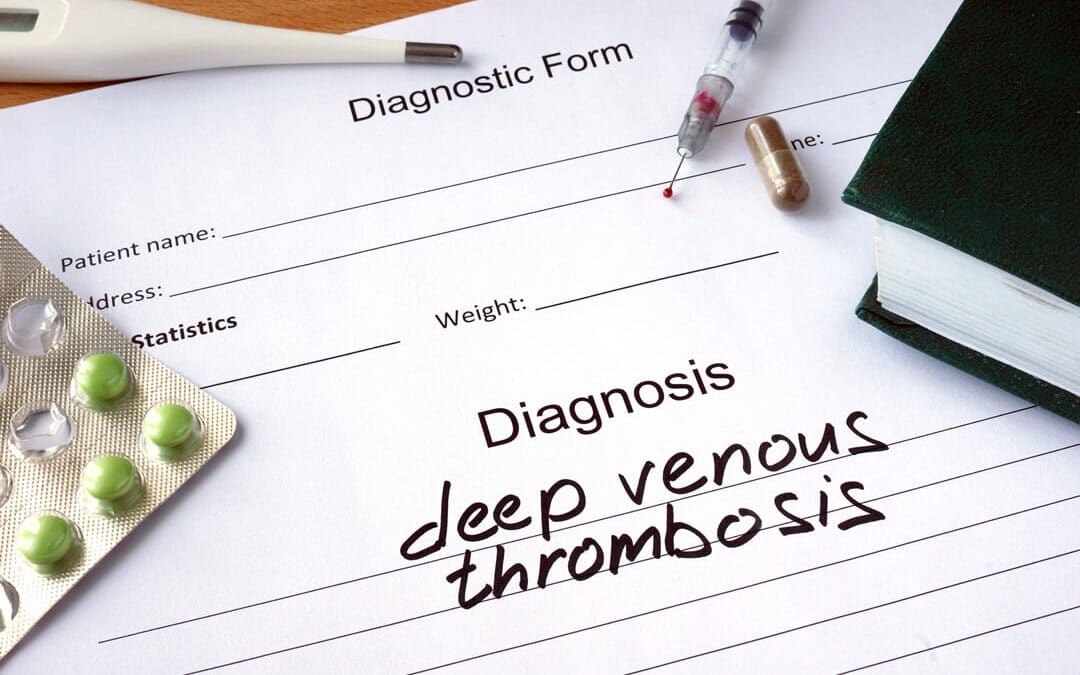According to the Centers for Disease Control and Prevention, up to 900,000 people in the United States are affected by Deep Vein Thrombosis each year, and between 60,000 to 100,000 people die from it every year.
For some individuals suffering from DVT, the severity of their symptoms may prevent them from being able to work and earn a living. In such cases, applying for Social Security Disability benefits can provide much-needed financial assistance.
What is Deep Vein Thrombosis (DVT)?
Deep Vein Thrombosis (DVT) is a vascular condition that may occur when one or more blood clots form within one or more of the deep veins in the body. DVT commonly occurs in the veins of the legs. The formation of a clot can restrict blood flow to the affected area, causing pain, redness, and swelling. If the clot dislodges and travels to other parts of the body, it can cause dangerous complications such as embolisms, which can block blood flow in the lungs, heart, or brain.
Several factors can contribute to the development of DVT, including prolonged bed rest, recent surgery, obesity, smoking, pregnancy, birth control pills, and certain medical conditions, such as cancer treatment or blood-clotting disorders.
DVT symptoms may include redness, swelling, heat, and pain in the affected area. To diagnose DVT, doctors typically use X-rays, blood tests, ultrasounds, or measurements of blood flow through the legs.
Appropriate treatment for DVT, such as blood thinners or surgery, is crucial to manage the condition and prevent complications.
While some cases of DVT can be effectively managed with treatment, others may lead to severe complications and long-term health issues. These complications can include:
- Pulmonary Embolism (PE): A life-threatening condition that occurs when a blood clot dislodges from the vein and blocks blood flow in the lungs.
- Stroke: An interruption of blood flow to the brain, resulting in brain damage or death.
- Chronic Venous Insufficiency (CVI): A condition that arises when DVT damages the veins in the legs, preventing proper blood flow and causing chronic pain, leg ulcers, and difficulty walking.
SSDI and DVT
The Social Security Administration (SSA) has a 5–step process they use to determine a claimant’s eligibility for SSDI benefits. Those filing an SSDI claim for DVT must go through the following process:
- Determine if the claimant is working at or above the Substantial Gainful Activity (SGA) level as defined by the SSA in the year they file. The SGA level for the current year can be found here.
- Determine if the claimant’s complications from DVT significantly limits their ability to perform basic work activities, such as
- sitting
- standing
- reaching
- pulling or pushing
- lifting or carrying
- simple cognitive reasoning
- Determine if complications from claimant’s DVT meet the criteria outlined in the SSA’s impairments list.
DVT does not have a specific listing on the impairments list. But you could qualify for benefits if you have the related complication of Chronic Venous Insufficiency (CVI) as it is listed in the SSA Blue Book.
To meet the criteria for CVI (Listing 4.11), you must have medical records confirming adiagnosis of CVI and experience at least:
- Brawny edemacausing accumulation of fluid in the legs, leading to severe swelling, thickened skin, and tissue discoloration.
- Cellulitis or scaling of the skin on the legs causing burning, itching, or cramping.
- Skin ulcers are open wounds that do not heal, occur frequently, or re-open persistently over three months of treatment.
- Determine if the claimant can still do any work they may have done in the past, despite the complications caused by their DVT.
- Determine if the claimant can do any other type of work based upon their
- age
- education
- prior work experience
- mental and physical capabilities
Getting Help with Your Disability Claim
If you have Deep Vein Thrombosis and its complications, it may have a significant impact on your ability to work and maintain a normal quality of life. Those affected this way by DVT can pursue the financial assistance they need during this challenging time. You may want essential to consult with a knowledgeable attorney to maximize the chances of a successful claim and ensure that all necessary documentation and evidence are provided to the SSA.
Brock and Stout’s disability attorneys have over 25 years of experience working with clients to get them to disability benefits they need. Contact us for a free evaluation to let us see if we can help you.

